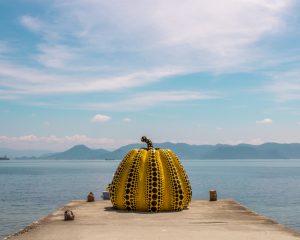
The word distance comes from the Latin distantia, a noun derived from the verb distare, which is composed of the prefix dis and the verb stare.The prefix deserves special attention.
It derives from the Proto-Indo-European *dwi– meaning both “separately” and “two”; *dwi– then becomes *dwis meaning “in two” and then dis-.
Thus, the word distance implies the idea of two entities that stand separately, that are far apart. It is also interesting that the word has a neutral meaning: there is no hostile or agonistic overtone in the contrast of the two separate units.
Now rather than indicating extremes, distance indicates the space, physical or otherwise, between two entities. In this sense, distance could be understood as the ground that separates, keeping apart two things or persons, but also as the common ground because it is the space in which the two parties think of themselves in relation: a segment of space between two things or persons is distance, but it only exists in the presence of the two points that circumscribe it. There is no distance without the other, without the two. So distance is already a relational and relative space.
As the recent experience of Covid-19 has taught us, living far apart is not easy, but at the same time it is possible to make the space that separates more meaningful in the expectation of soon being able to shorten it. Technology and its forms of communication make it possible to connect people and things that are far apart, but it is not possible to ignore the separation that still exists. And in fact, as its etymology suggests, in distance coexist these two aspects, relationship and separation.
Warming up humanly and making distance medicine more efficient is possible, but it is not easy, as several initiatives in recent years have shown. Telemedicine (whose etymology uses a Greek adverb, tele, meaning ‘far away’, as is often the case with scientific neologisms; e.g. telephone, telescope) works well if the parties involved, the caregiver and the patient, are equally considered in their needs and requirements, and if one does not forget that a doctor-patient relationship at a distance is not a complete substitute for one in presence. There are many aspects that can be profitably cultivated with telemedicine, but certainly the total replacement of a remote medicine at the expense of the warmth of presence is not desirable. We should always remember that technology must be a tool for human action and not become its sole form of action.
Please leave us a word that expresses your ‘feeling of distance’.

Sigma!!!!!!!!!!!!!